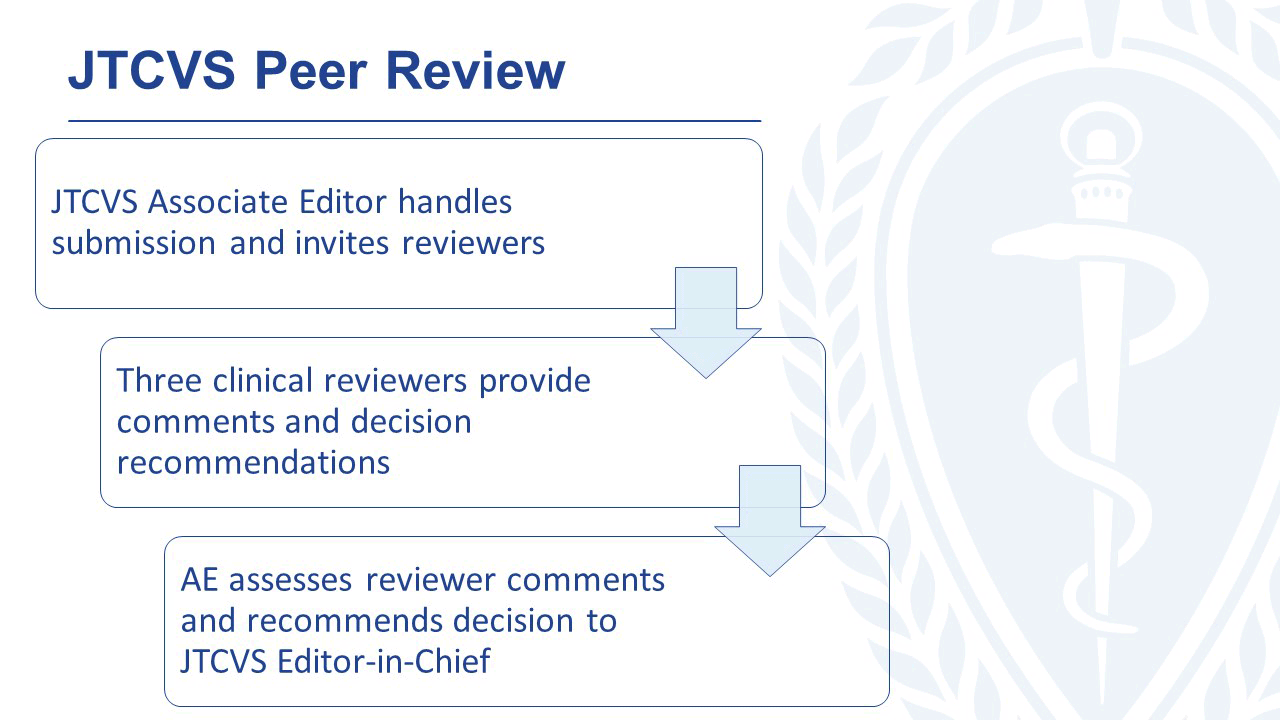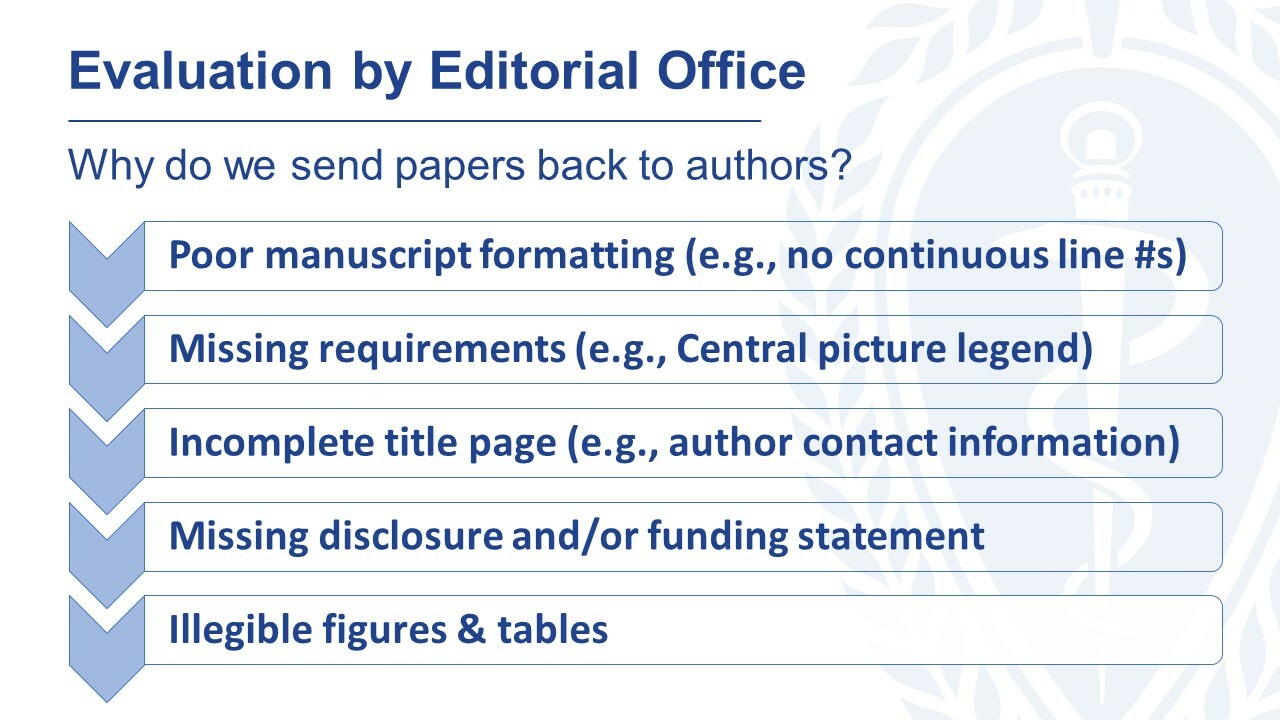The JTCVS Peer Review Cycle
When manuscripts are submitted, they are checked by the editorial office and assigned to an editor in its specialty.
The Associate Editor (AE) then decides who to invite for peer review. Editors aim for 3 clinical reviewers per full-length manuscript.
Once the reviews are received, some manuscripts then go for a statistical review. This does not apply to all papers as it lengthens the process.
Once all reviews are received the AE, Associate Statistical Editor (if applicable) submit their decisions and comments to author, which then go to the Editor-in-Chief for a final decision and the authors are then notified.
Rarely, if ever, do manuscripts get an accept decision as their first decision. In JTCVS, the you may receive an accept, revise, revise for JTCVS Open or JTCVS Techniques, or reject.

The AE’s responsibilities during the peer-review process include:
- Choose good reviewers. Expand the reviewer registry and accurately rate reviewers.
- Give specific advice on what to focus on and augment the peer reviews.
- Carefully weigh the reviews in terms of quality of assessment, appropriateness of the recommendation, and validity of specific suggestion for improvement. Clarify any contradictions from the reviewers.
- Communicate with the editor and the authors. Provide clear expectations of authors.
When the authors submit a revised manuscript, they should comprehensively respond to comments from reviewers and editors. Even if the authors decline to make a change, this should be explained in the response to reviewers document.

Tips from the Editorial Office for Manuscript Preparation
- Review JTCVS Information for Authors prior to submission. List of requirements for each article type for convenience.
- Ensure the manuscript is formatted properly. Add in page and continuous line numbering and make sure everything is legible.
- Provide all required items in the manuscript or other submission files. If anything is missing, the manuscript will be returned prior to review.
- All figures must be legible and the entire table must be visible in the submission PDF.
- AATS Journals follow ICMJE recommendations which states authors should disclose all relationships, activities and/or interests whether or not they're related to the manuscript. If there is any conflict of interest (or perception thereof), please state how this was managed in the acknowledgements of the manuscript.
- Figure Tips:
- Readers should be able to understand figures based on the image & legends. They should not have to read the entire manuscript to understand the images.
- Kaplan-Meier Curves must meet the following requirements:
- The x-axis should be in years (or months for short time periods) and the y-axis in percentage
- Numbers at risk should be listed along the x-axis
- The graph should be truncated when fewer than 10 patients are shown (or fewer than 10% for smaller cohorts)
- Confidence limits must be stated in the graph or legend, as well as shown in the graph using shading, bars, or dotted lines.
- Readers should be able to understand figures based on the image & legends. They should not have to read the entire manuscript to understand the images.
- If provided, graphical abstracts should include the title of the manuscript as well as sections for the methods, results, and implications statement (either left-to-right or top-to-bottom).
- If provided, graphical abstracts should include the title of the manuscript as well as sections for the methods, results, and implications statement (either left-to-right or top-to-bottom).
